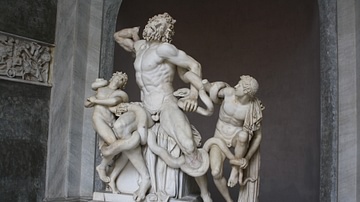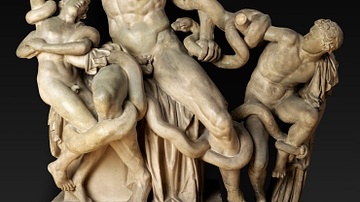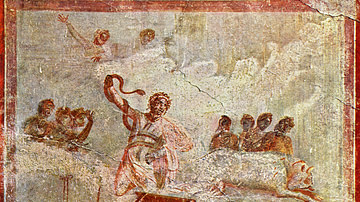Illustration
Detail from Laocoön and His Sons ( c.42-20 BCE), Vatican Museums, Rome, Italy. This statue group was found in 1506 CE on the Esquiline Hill in Rome. Following its discovery in a Roman vineyard in 1506 CE, it was placed in the Vatican, where it remains today. The story is that during the Trojan War, Laocoön, a priest of Apollo in the city of Troy, warned his fellow Trojans against taking in the wooden horse left by the Greeks outside the city gates. Athena and Poseidon, who were favouring the Greeks, sent two great sea-serpents which have wrapped their coils around Laocoön and his two sons and are killing them. From the Roman point of view, the death of these innocents was crucial to the decision of Aeneas, who heeded Laocoön's warning, to flee Troy, and this led to the eventual founding of Rome.
About the Author
Cite This Work
APA Style
Biletleri, M. (2020, October 16). Details from Laocoön & His Sons. World History Encyclopedia. Retrieved from https://www.worldhistory.org/image/12869/details-from-laocoon--his-sons/
Chicago Style
Biletleri, Müze. "Details from Laocoön & His Sons." World History Encyclopedia. Last modified October 16, 2020. https://www.worldhistory.org/image/12869/details-from-laocoon--his-sons/.
MLA Style
Biletleri, Müze. "Details from Laocoön & His Sons." World History Encyclopedia. World History Encyclopedia, 16 Oct 2020, https://www.worldhistory.org/image/12869/details-from-laocoon--his-sons/. Web. 17 Apr 2025.








